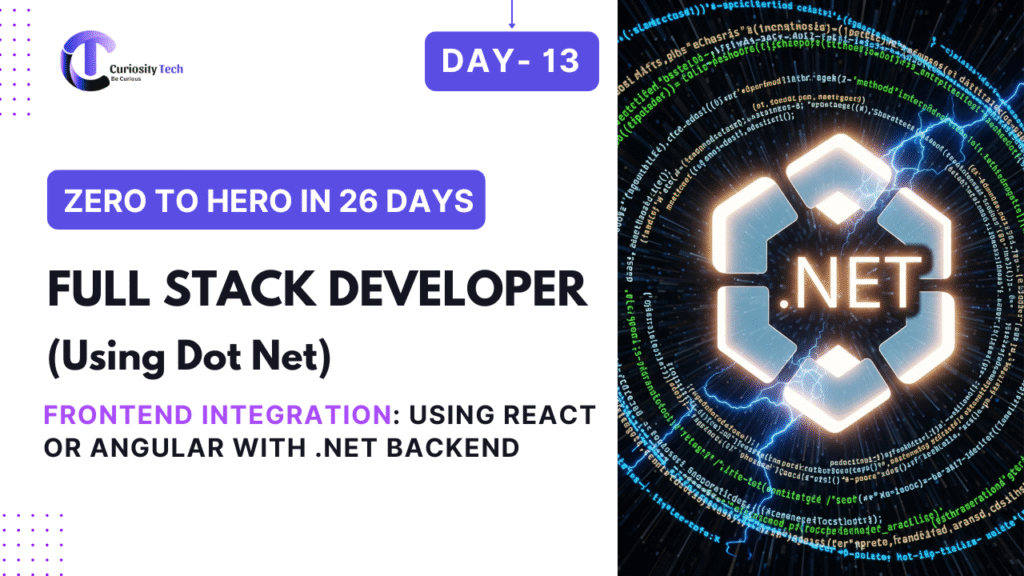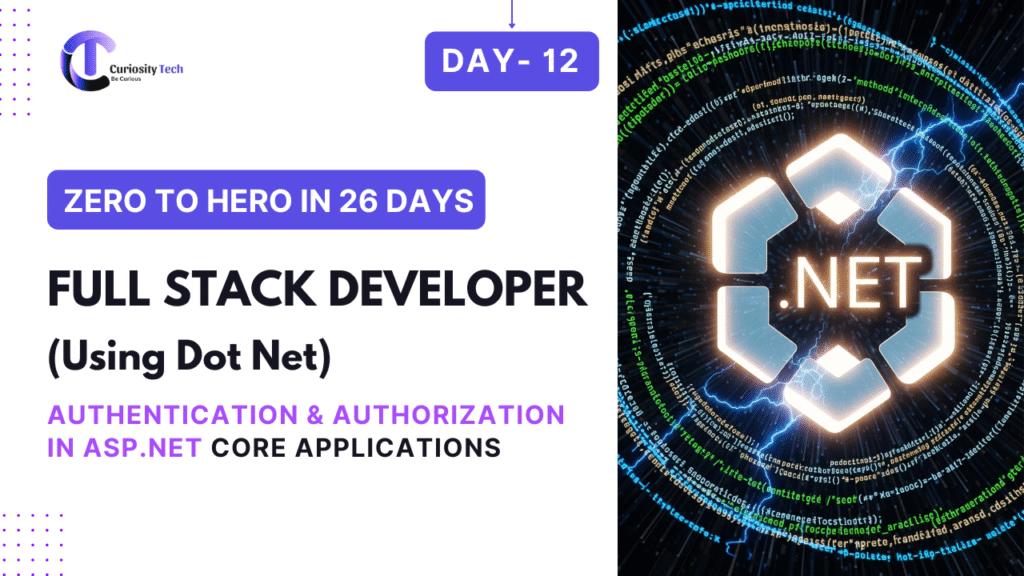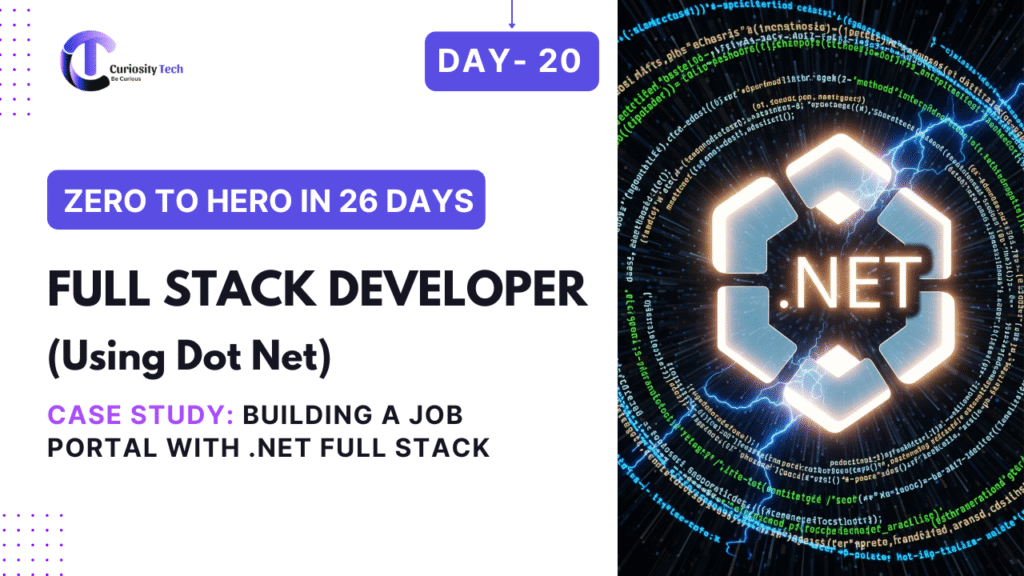Format: Tutorial + project-based integration + flow diagram + practical examples
Introduction
A FullStack .NET developer doesn’t just build backend APIs—they also integrate them with modern frontend frameworks like React or Angular. Frontend integration allows users to interact dynamically with your .NET applications, providing responsive and interactive experiences.
At CuriosityTech.in, learners gain practical skills to connect frontend UI with secure .NET backends, making projects real-world ready.
1. Choosing Frontend Framework
| Framework | Features | Use Case |
| React | Component-based, virtual DOM, flexible | Single-page applications, dynamic UIs |
| Angular | Complete framework, two-way binding | Enterprise apps, structured projects |
Tip: Both integrate seamlessly with ASP.NET Core Web API.
2. Setting Up the Backend
- Ensure your ASP.NET Core Web API is running:
- Example endpoint: /api/courses
- Example endpoint: /api/courses
- Enable CORS (Cross-Origin Resource Sharing) in Program.cs:
builder.Services.AddCors(options =>
{
options.AddPolicy(“AllowAll”,
builder => builder.AllowAnyOrigin().AllowAnyMethod().AllowAnyHeader());
});
app.UseCors(“AllowAll”);
3. React Integration Example
Install React App:
npx create-react-app curiositytech-frontend
cd curiositytech-frontend
npm start
Fetch API Data in React:
import React, { useEffect, useState } from ‘react’;
function Courses() {
const [courses, setCourses] = useState([]);
useEffect(() => {
fetch(‘https://localhost:5001/api/courses’)
.then(response => response.json())
.then(data => setCourses(data));
}, []);
return (
<div>
<h2>Available Courses</h2>
<ul>
{courses.map(course => (
<li key={course.id}>{course.name} – {course.instructor}</li>
))}
</ul>
</div>
);
}
export default Courses;
4. Angular Integration Example
Install Angular App:
ng new curiositytech-frontend
cd curiositytech-frontend
ng serve
Fetching API Data in Angular Service:
import { Injectable } from ‘@angular/core’;
import { HttpClient } from ‘@angular/common/http’;
import { Observable } from ‘rxjs’;
@Injectable({
providedIn: ‘root’
})
export class CourseService {
private apiUrl = ‘https://localhost:5001/api/courses’;
constructor(private http: HttpClient) {}
getCourses(): Observable<any> {
return this.http.get(this.apiUrl);
}
}
Component to Display Courses:
import { Component, OnInit } from ‘@angular/core’;
import { CourseService } from ‘./course.service’;
@Component({
selector: ‘app-courses’,
template: `
<h2>Available Courses</h2>
<ul>
<li *ngFor=”let course of courses”>{{ course.name }} – {{ course.instructor }}</li>
</ul>
`
})
export class CoursesComponent implements OnInit {
courses: any[] = [];
constructor(private courseService: CourseService) {}
ngOnInit(): void {
this.courseService.getCourses().subscribe(data => this.courses = data);
}
}
5. Real-World Project: CuriosityTech Course Portal
Integration Flow:
[User Frontend (React/Angular)] —> [ASP.NET Core Web API] —> [SQL Server Database]
- Users can view courses dynamically
- Students can enroll in courses
- Admins can manage courses
- Integration ensures secure JWT-protected API endpoints
Benefits:
- Full interactive UI
- Seamless communication with backend
- Real-world project experience for portfolios
6. Best Practices
- Use Axios or HttpClient for API calls
- Handle errors and loading states in frontend
- Secure API requests with JWT tokens
- Structure frontend code with components/modules
- Test API integration before deployment
7. CuriosityTech.in Mentorship Insights
Conclusion
Frontend integration is essential for dynamic, interactive web applications. Connecting React or Angular with a secure ASP.NET Core backend ensures professional-grade FullStack applications. With CuriosityTech.in’s mentorship, learners gain practical experience in building responsive, secure, and scalable projects.
The next step is Day 14 – Dependency Injection in ASP.NET Core, where we’ll explore service management, DI principles, and real-world applications.
SEO & Meta Information
- Meta Description: Learn frontend integration with React or Angular and ASP.NET Core backend. Build dynamic FullStack applications with CuriosityTech.in mentorship.



